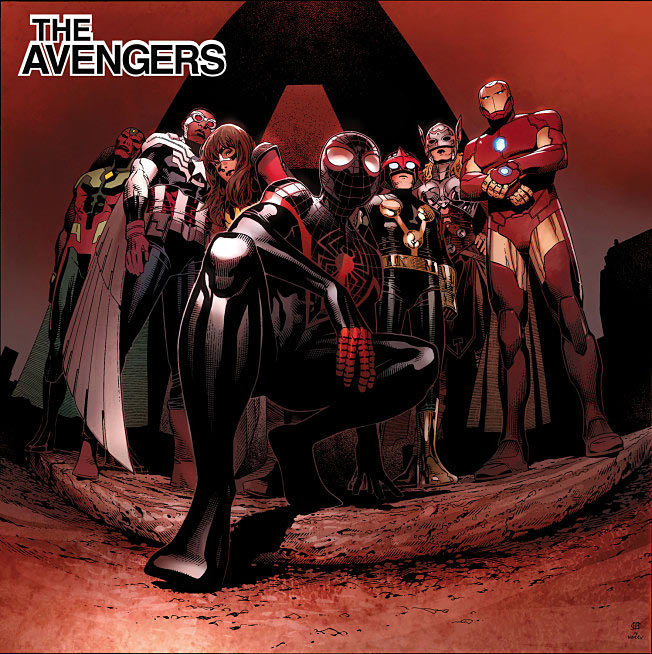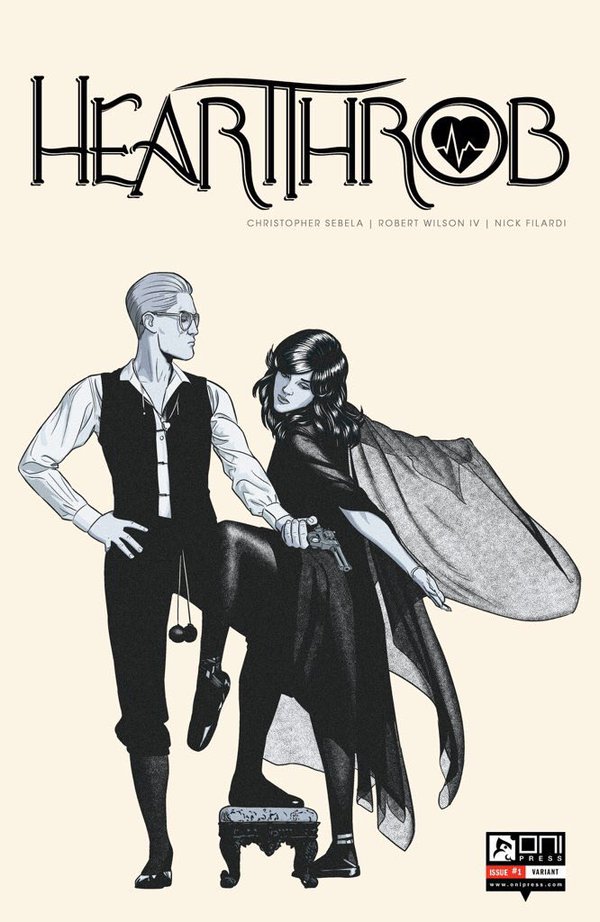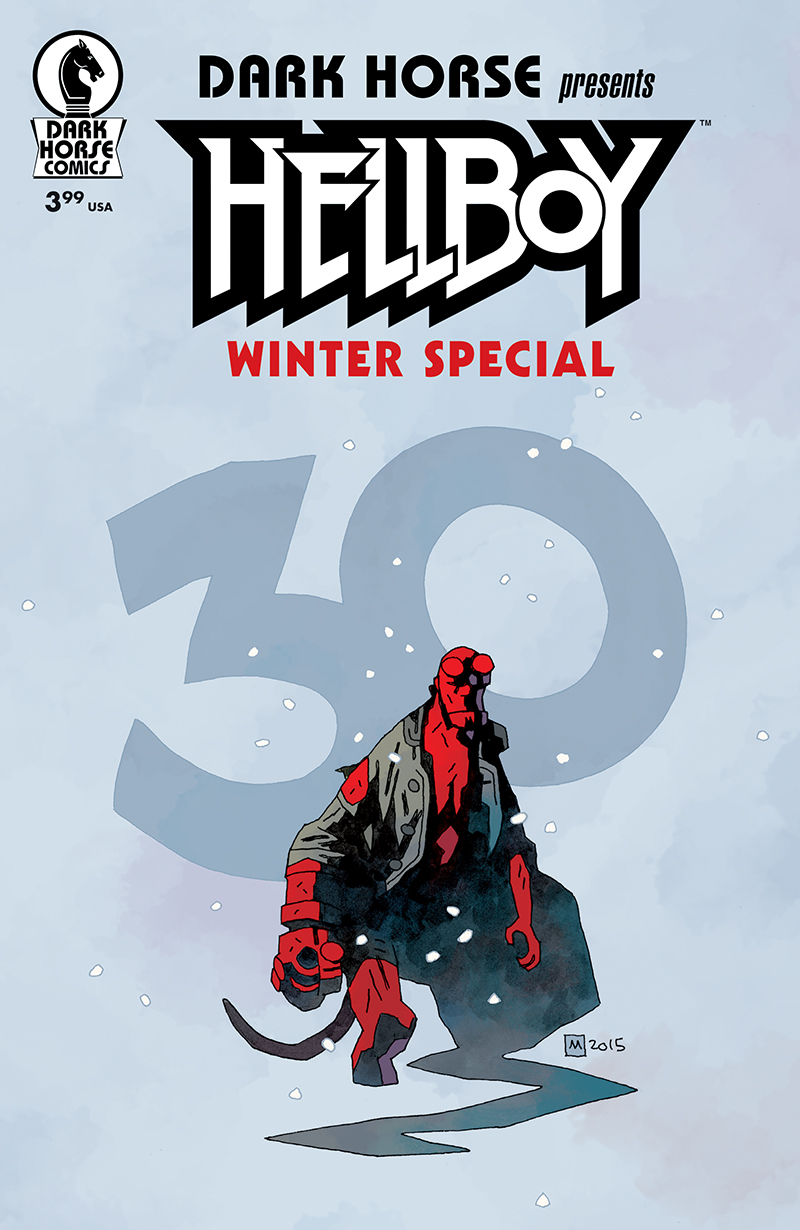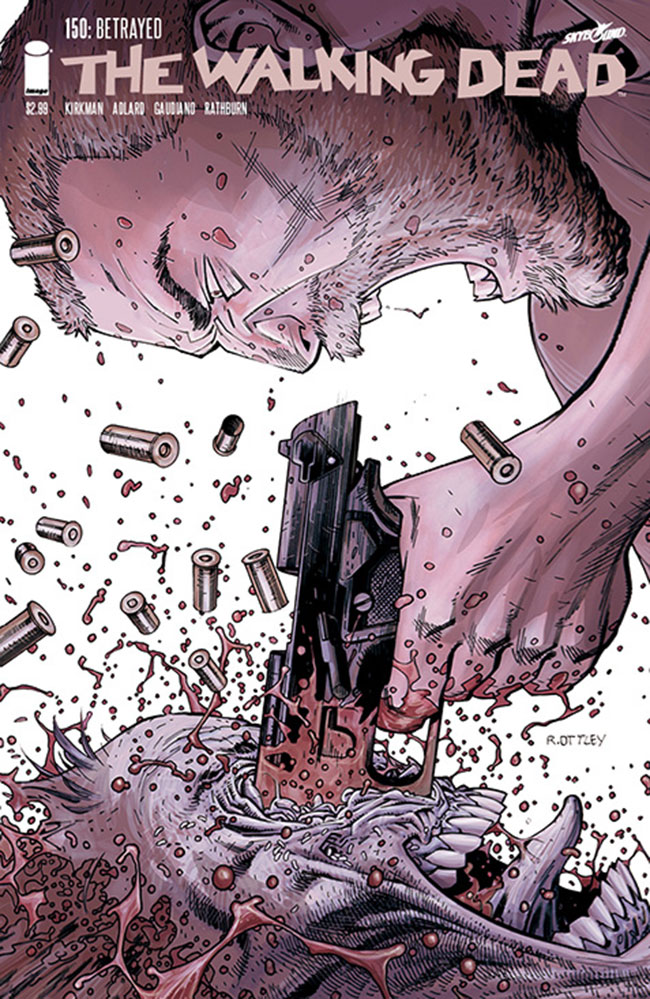Comic Publishers Share Their Perspectives on Variant Covers
We share comic publishers' quotes in full from yesterday's longform
Yesterday, we took a long look at the merits and position of variant covers in today’s comic industry. For it, I had asked four different publishers for official positions on variants, and their answers were all superb. Here’s the problem, though: the article was incredibly long and I couldn’t run their answers in full. So today, we’re going to do just that.
Not every answer was created equal, though. Two of the publishers answered questions for the piece while another two just gave me a straight take on their company’s stance on the subject. That’s why you’ll see a slightly different setup for each. Either way, give their full answers a read below, and thanks to each of them for the perspective.
Note: DC did not respond for comment, BOOM! declined our invite to participate, and Valiant/IDW did not get responses back in time. Responses below in alphabetical order by last name.

David Gabriel, SVP Sales and Marketing, Marvel Comics
In recent years, the frequency of variant covers – especially incentive variants – has grown dramatically, and Marvel’s been a big part of that. Why is that? What makes them something Marvel regularly includes as part of its product mix?
DG: I can say that I personally heralded the return of variant covers way back in 2005 with New Avengers #1. And 11 years ago, we said the same things we say today. We make variants first and foremost to serve as marketing and promotion for comics. We will make and sell variants as long as they are selling. And lastly we have always affirmed that any retailer or customer who doesn’t want a variant, shouldn’t buy one. Over these last many years they’ve proven helpful in promoting comic series, getting new customers in retail shops (we received just as many warnings and admonishings over the Obama Spider-Man cover) as well as proven to be financial boons to those retailers who use them wisely. The fact that we’re talking about them as a “thing” shows that they are important to the industry and as long as we keep a careful watch on them, they’ll continue to be so.
When Star Wars #1 came out last January, we were able to surpass 1 million units on that series with a mix of covers. Getting to that unheard of number aided promotion on that already highly anticipated series in a major way. An effect we’re still feeling today even as we move into issue #16 and beyond. But what’s most interesting, and always overlooked, about those 1 million units is that 50-60% of them went to channels OUTSIDE the direct market. So without a newsstand anymore, variant covers help us get comics into the hands of new fans through new opportunities that had not existed previously. And now, a year later we see the numbers showing us a good portion of those fans are coming into comic shops to begin their continued pattern of purchasing. That’s been a terrific boon to the industry and one that I daresay no other publisher has yet to achieve.
At September’s Diamond Summit, you were quoted as saying “we realize we made it too complicated” in regards to ordering of the Hip Hop cover month for retailers. From there, incentive numbers were decreased slightly, but going forward, is Marvel looking to simplify that process at all?
DG: Most definitely. In the case of the Hip-Hop Covers, we’ll be the first to say we underestimated how popular they’d become and the demand for those covers. But what really happened isn’t the story anyone wants to talk about. Regardless of whether the “incentive” or “hoop” as some folks like to call it was too high, too low, or just right, whatever it was, retailers had to take a LOT of time to figure it out…and that was valuable time. Then you multiply that time drain by 30 titles in one month, 30 more after that and you get to see how long this process took them. So regardless of whether they met the incentive initially or had to do the math to make it work (and possibly doing the math incorrectly, as well), retailers were bleary eyed by the time they finished placing their orders. This was the story I heard from every single retailer I spoke to. And an interesting fact about the comics industry is that you will rarely if ever hear the same thing from two retail accounts, let alone every single account! I had been working with Diamond for a while to get a system in place where the retailer will have that number generated for them by a program and instantly appear when they go to order. This takes the work out of the “hoop” and then the retailer can decide if they want to purchase or not. I’m thrilled to say that I’ve already heard Diamond is testing the new program and should have it ready shortly, and this won’t just be for Marvel books, it’ll be for all publishers.
One concern I’ve heard from retailers is that incentive variants don’t actually result in increased in-store sales. Rather, they – in the best case – result in a higher cost sale that offsets comic inventory that ends up in a warehouse. Is that a concern Marvel’s aware of? If so, is that a consideration that is being factored into 2016 plans at all?
DG: We are definitely aware that a few vocal retailers say this, but this is not something that the majority of retailers call out. The repeated and increased sales over the past few years just do not support this as an overwhelming concern. I’d go so far as to say that there were the same concerns brought up way back when New Avengers #1 came out in 2005. A few folks called out from the rafters that the industry would collapse the month that series launched.
Incentive covers are just one program we utilize and it’s one of many. At this point we’ve got years of consistent sales data that shows what works and what doesn’t. When we really find out that something isn’t working, and the key to that is to watch the ordering patterns and sales numbers, we move on to something else.
Our goal is always and has always been to make our retailers money and keep them in business. We never want to have a retailer buy copies of a book just so they can sit on shelves or in warehouses. That helps no one. We’re in this business to tell the greatest stories we can and we want those stories in the hands of readers. Seeing all this any other way just doesn’t make sense. This last year has been the most successful year in recent memory for the entire comics industry, one of the factors is absolutely the strategic use of variant covers.

James Lucas Jones, Editor-in-Chief, Oni Press
JLJ: Variant covers are a complicated issue that I have mixed feelings about. As an independent, creator-focused publisher, they have the potential to aid in our ongoing battle for exposure for unproven titles and creators. A cover from an established talent works a lot like a great pull quote from a creator with a following. For comics based on an existing property, they provide an opportunity to work with other fans of that source material who may not be able to take on full art chores for a comic or a short.
That said, it’s a cheap parlor trick that hopefully gooses the sales on a first issue, broadens our readership base, and makes it easier to sustain quality work. Note that I’m saying “hopefully.” The idea of selling “collectibles” rather than “content” is not really the Oni Press way and we’ve made a conscious effort to steer away from “1-in-some-absurd-number” variants and instead do our alternate covers as open order, limited only by the order number on the standard retail cover.
Retailer exclusives are a little bit different and provide an opportunity for retailers to show massive support for a title in a way that can be mutually beneficial for the store, the title, and us as a publisher.
Alternate covers can be a fun opportunity for creators, retailers, and fans. At the end of the day, our goal is for our titles to reach as much of their potential audience as possible, not just for a single issue, but for the series as a whole. While the short term gains with variants are clear, the long term effects, both positive and negative, are muddied and we’re constantly reevaluating our approach to them to try and best maximize both our immediate and future audience growth.

Matt Parkinson, Vice President of Marketing, Dark Horse Comics
MP: We’re not in the business of using variants as a means spike market share or forcing completists to have to purchase twenty different covers of the same issue. We’re rather selective when choosing to do variants on our books and base our decisions on titles we know the retailers can sell and fans will want. We also structure our variant incentives in a realistic way so that any retailer can qualify for variant cover ordering.

Eric Stephenson, Publisher, Image Comics
Variants and incentive variants in specific are becoming more prevalent with each passing year, it feels. What’s Image’s stance on publishing books with variants of those varieties? And because of the creator-owned nature of your books, is that something you really can just give feedback on, rather than creating a policy of some variety?
ES: Retailer variants are pointless. They’re short-term cash grabs that do nothing for a book’s health. When Corey Murphy started here, we were doing a lot of them — I think there was one title last year that has something like a dozen covers for its first issue — and there wasn’t any real analysis going into what happened after that. But Corey took a hard look and what was happening and there were stores signing up for these exclusive covers and then literally never ordering another issue of the book. r if they did order the book again, the orders for issues one, two, whatever — they are next to nothing. No support whatsoever. And that’s not a fruitful partnership. You look at these Loot Crate things — which we have done in the past as well — and it’s clear there’s no benefit from that. Look at the sales for something like Orphan Black #1 and then look at sales for later issues. it doesn’t help in the long term. If you’re just looking to make a lot of money before diving over the cliff, well, great. There you go. But these variants have zero long term benefit, and right now, everything we do as an industry should be geared toward making sure we’re still around in the future.
As far as Image goes, that is our policy. There are books that do standard variants that everybody can order, but we do not do retailer exclusives on single issues at this point.
One thing that Image did do in 2015 was step back from running single issue retailer exclusive variants, instead focusing on running the same idea back for trade paperbacks. The statement on that subject covered the why behind it to a degree already, but for you, why was that the right move to make?
ES: The main difference between exclusives for trades and single issues is that the trades have a longer shelf life, plus the quantities are store needs to order are lower. There’s less burden on the individual store to make immediate sales with those — often at much higher quantities — within a smaller timeframe, and general speaking, people buying the trades are buying them to read, not simply to slab and sell. That said, we’re still in relatively early days in terms of roll out. We’ve had a lot of interest in variants for trades and even hardcovers, but we’re going to be paying attention to how this works for retailers and how it works for our creators. As with everything we do, the main criteria is whether or not is promoting sustainable growth.
Header art by Michael Cho from his theme cover month at Marvel.
